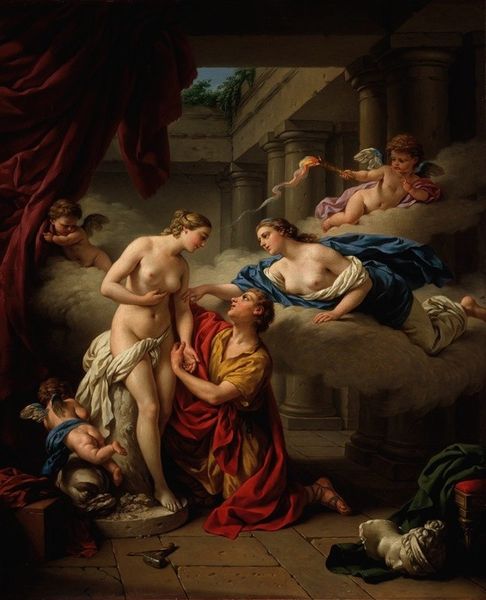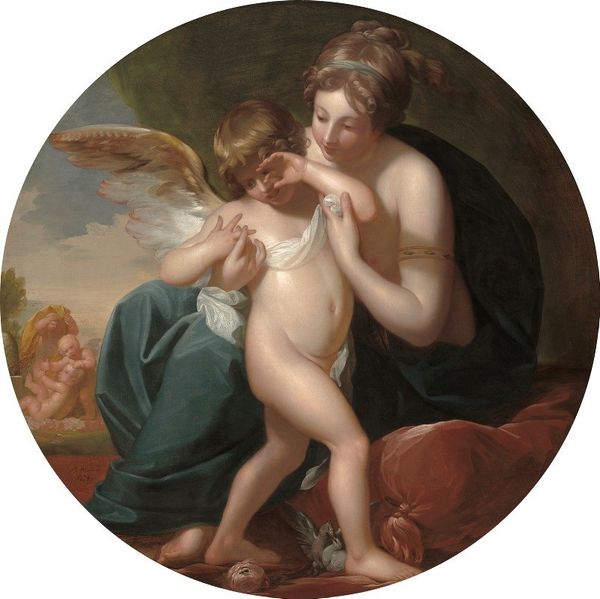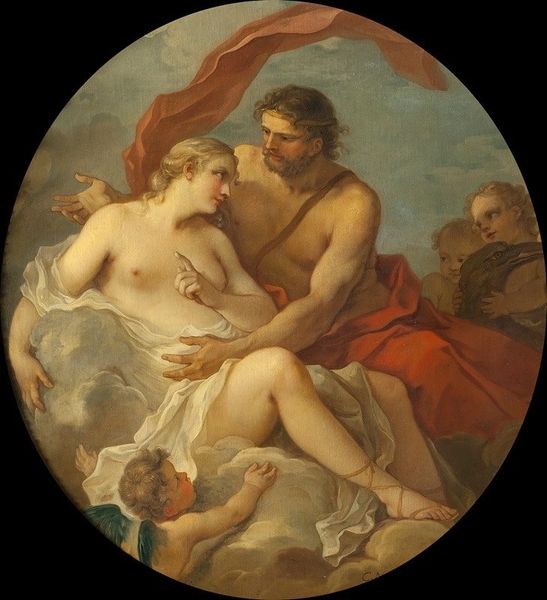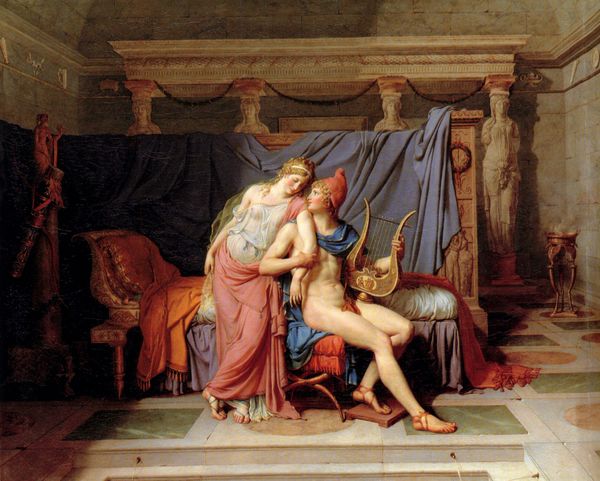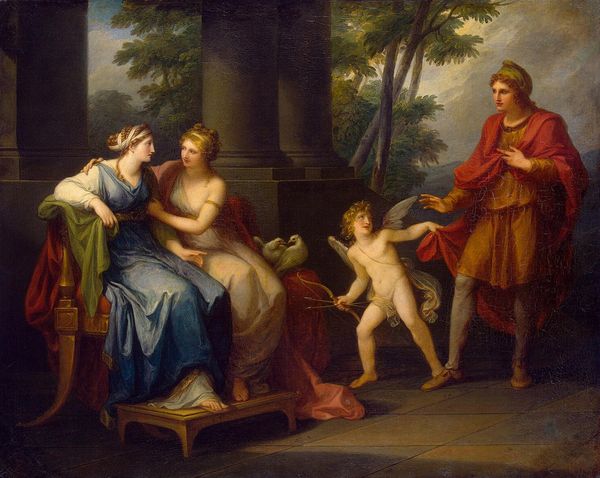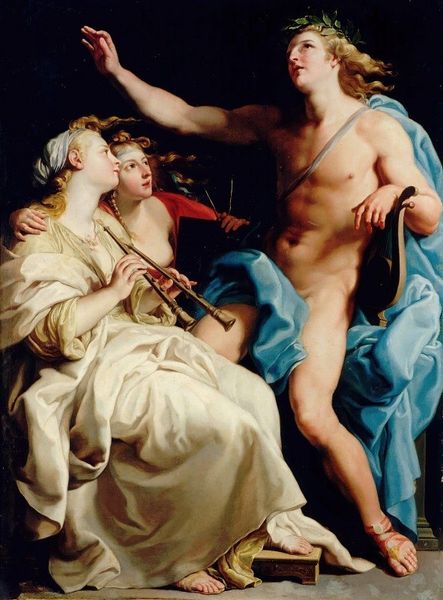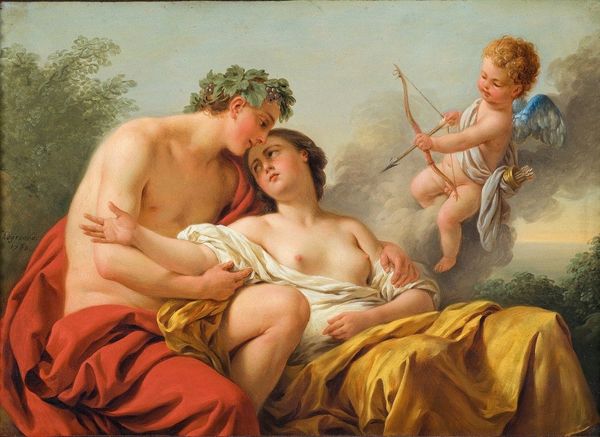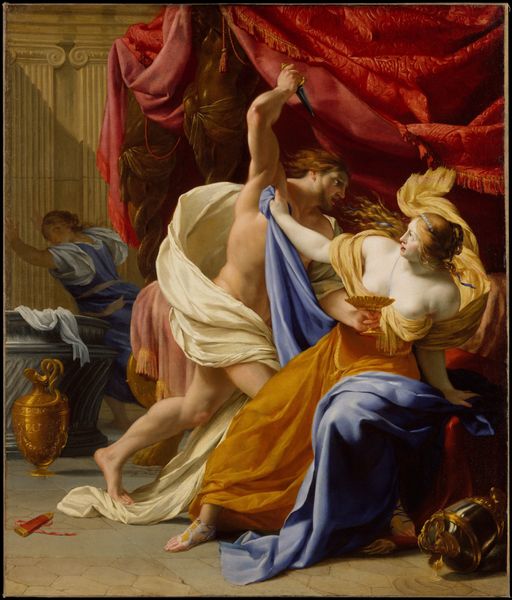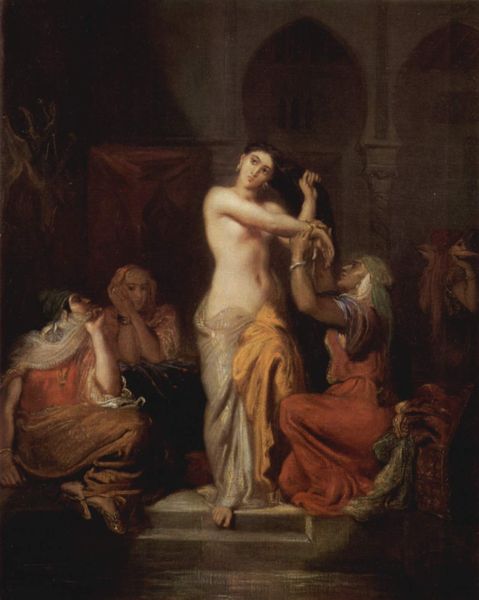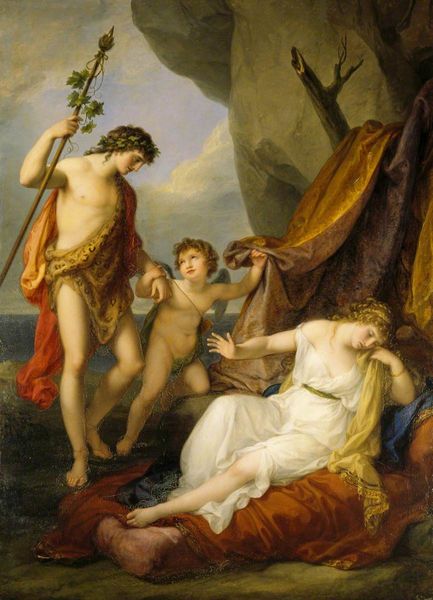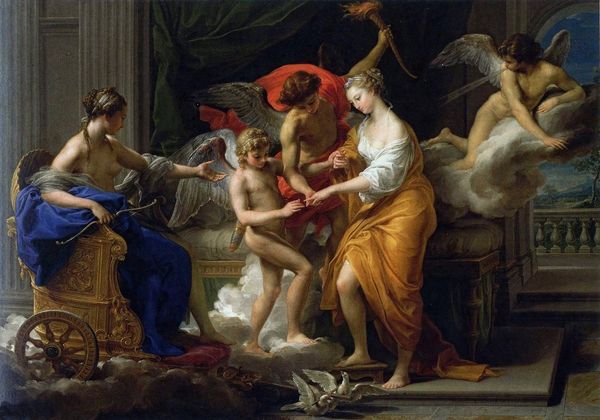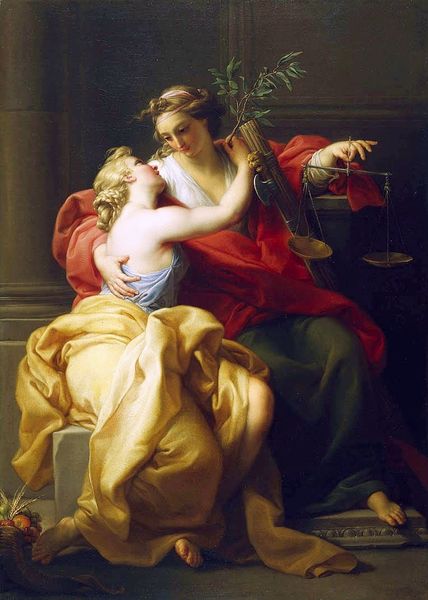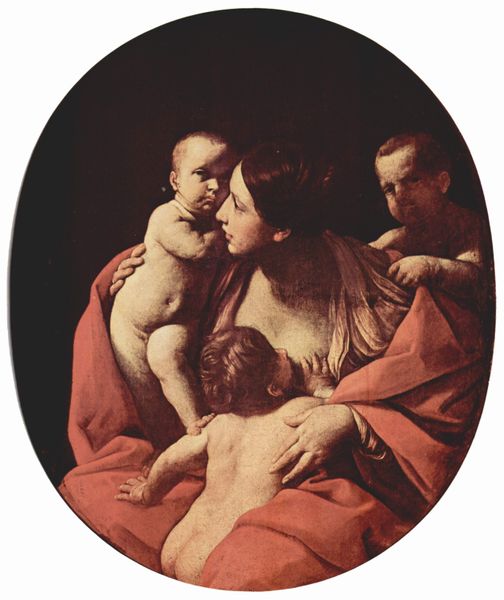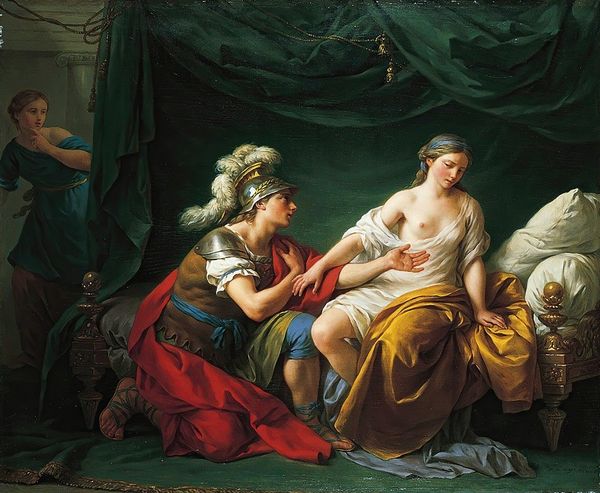
Copyright: Public Domain: Artvee
Louis-Jean-François Lagrenée painted "Pygmalion and Galatea," capturing a pivotal moment of transformation. Here, we witness the statue of Galatea, brought to life by Venus in response to Pygmalion's fervent desire, the sculptor reaching out to touch the newly animated woman. Consider the motif of the awakening statue. We observe it in ancient sculptures and Renaissance paintings, each iteration echoing humanity’s fascination with creation and animation. This motif speaks to the tension between art and life. It reflects a deep, subconscious longing to bridge the gap between the inanimate and the living. This theme emerges across cultures, from the myths of Golem to contemporary science fiction. There is always a deep longing of humanity for artificial creation, and our fears and hopes around it. Here, the gentle touch and loving gaze convey an emotional intensity, as Pygmalion's devotion gives life to stone. These feelings resonate in the art of antiquity and still drive modern art and philosophical questions around existence and consciousness. The motif continues to evolve, showing the continuous reshaping of archetypes.
Comments
No comments
Be the first to comment and join the conversation on the ultimate creative platform.
